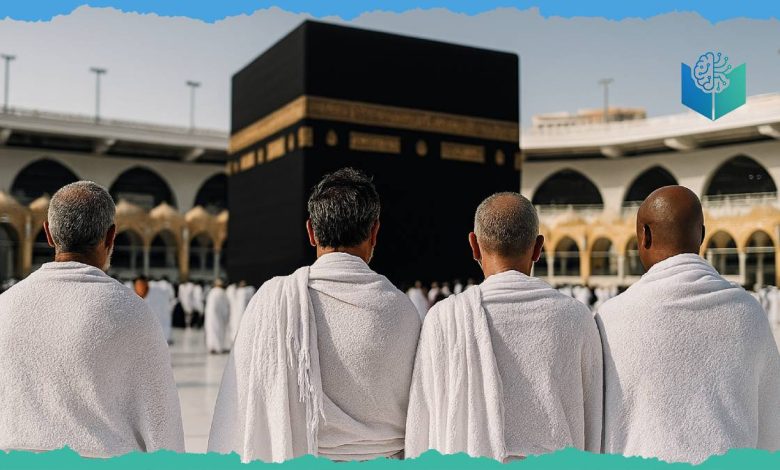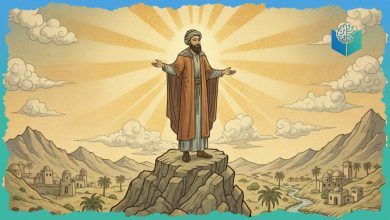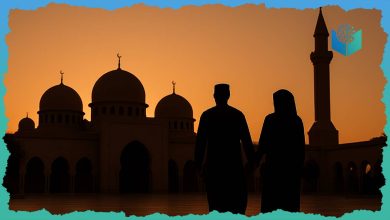Hajj and Umrah

The pilgrimage in Islam, Hajj and Umrah is one of the most spiritually powerful journeys a believer can undertake. It is a physical and emotional voyage that connects Muslims to their Creator, their community, and the legacy of the prophets of God. These sacred rituals are not only acts of worship but also profound reminders of faith, humility, and unity among believers.
In this complete Hajj guide and Umrah guide, we will explore the meanings, rituals, and spiritual benefits of these journeys, helping every pilgrim prepare for a life-changing experience grounded in the Quranic lifestyle.
The Meaning of Pilgrimage in Islam
The pilgrimage in Islam represents total submission to Allah and unity among all Muslims. Every year, millions of believers travel to Makkah, wearing simple garments, leaving behind worldly differences to stand equal before their Creator. This act of worship fulfills one of the five pillars of Islam, as Allah commands:
“And proclaim to the people the Hajj [pilgrimage]; they will come to you on foot and on every lean camel; they will come from every distant pass.” (Quran 22:27)
This verse captures both the physical and spiritual essence of pilgrimage—an open invitation from Allah to approach Him in humility and devotion.
Understanding Hajj: The Major Pilgrimage
Hajj is an obligatory act for every Muslim who is physically and financially able to perform it at least once in their lifetime. As a comprehensive Hajj guide, it is essential to understand that this pilgrimage occurs annually during the Islamic month of Dhul-Hijjah.
The rituals of Hajj commemorate the trials and faith of Prophet Ibrahim (Abraham), Prophet Isma’il (Ishmael), and Prophet Muhammad (peace be upon him)—the great prophets of God who exemplified patience, obedience, and trust in Allah.
“And [mention] when We designated for Abraham the site of the House, [saying], ‘Do not associate anything with Me and purify My House for those who perform Tawaf and those who stand [in prayer].’” (Quran 22:26)
This verse reminds believers that Hajj is a continuation of the legacy of monotheism established by Prophet Ibrahim.

The Main Rituals of Hajj
Every act within Hajj has deep symbolism. Here are the key Islamic rituals for pilgrims during Hajj:
- Ihram – The sacred state of purity, marked by wearing white garments and making the intention (niyyah) for Hajj.
- Tawaf – Circling the Kaaba seven times in an act of unity and devotion.
- Sa’i – Walking between the hills of Safa and Marwah, honoring the struggle of Hajar, the wife of Prophet Ibrahim.
- Wuquf at Arafat – Standing in prayer and reflection at the Plain of Arafat, known as the heart of Hajj.
- Muzdalifah and Mina – Collecting pebbles and performing the symbolic stoning of the devil (Ramy al-Jamarat).
- Eid al-Adha – The festival of sacrifice, commemorating Ibrahim’s willingness to sacrifice his son in obedience to Allah.
Each step in this Hajj guide reminds believers of surrender, patience, and divine love.
The Spiritual Meaning of Hajj
Hajj purifies the heart and renews the believer’s faith. It teaches discipline, equality, and empathy. The Quran beautifully expresses the essence of this journey:
“That they may witness benefits for themselves and mention the name of Allah on known days over what He has provided for them of [sacrificial] animals.” (Quran 22:28)
These “benefits” are not just material but deeply spiritual—cleansing the soul from sins and strengthening one’s connection with Allah.
Understanding Umrah: The Lesser Pilgrimage
While Hajj is performed during a specific time of year, Umrah—often called the “lesser pilgrimage”—can be performed at any time. This Umrah guide highlights that although it is not obligatory, it carries immense spiritual reward and purification.
The Prophet Muhammad (peace be upon him) said, as recorded in the Quranic spirit: “Performing Umrah after another Umrah expiates the sins committed between them.”
The rituals of Umrah are similar to those of Hajj, but shorter:
- Ihram – The intention and purification before beginning Umrah.
- Tawaf – Circling the Kaaba in devotion.
- Sa’i – Walking between Safa and Marwah.
- Halq or Taqsir – Shaving or trimming the hair, marking spiritual renewal.
Performing Umrah allows Muslims to renew their relationship with Allah and practice humility and gratitude.
Comparing Hajj and Umrah
Although both Hajj and Umrah are forms of pilgrimage in Islam, they differ in obligation and timing. Hajj is mandatory once in a lifetime, while Umrah is voluntary but highly recommended. Both, however, share the goal of spiritual cleansing and closeness to Allah.
The experience of standing before the Kaaba, in the same place where countless generations of believers have prayed, connects every pilgrim to the Quranic lifestyle—a way of life centered on remembrance, humility, and faith.

Lessons From the Pilgrimage in Islam
Equality and Unity
Hajj and Umrah strip away all worldly labels. In Islam, the white garments of Ihram erase social differences, reminding believers that before Allah, all are equal.
“O mankind, indeed We have created you from male and female and made you peoples and tribes that you may know one another. Indeed, the most noble of you in the sight of Allah is the most righteous of you.” (Quran 49:13)
Patience and Gratitude
The journey tests patience—through heat, crowds, and fatigue—but it also builds gratitude. Every challenge is an opportunity to grow spiritually.
Remembrance and Renewal
Pilgrimage renews the soul. Standing on Arafat, the pilgrim reflects on life, repents for sins, and seeks Allah’s mercy, embodying the Quranic lifestyle of constant self-improvement.
Preparing for Hajj and Umrah
Preparation is key to ensuring a smooth and fulfilling pilgrimage. Here are practical steps every pilgrim should consider:
- Spiritual Preparation – Learn the rituals through a trusted Hajj guide or Umrah guide, strengthen prayer habits, and seek forgiveness before departure.
- Physical Preparation – Stay fit and healthy, as the journey can be physically demanding.
- Financial Preparation – Ensure that all funds used are lawful (halal) and that family obligations are met before leaving.
- Knowledge – Study verses of the Quran related to Hajj and Umrah to understand their deeper meaning.
Platforms like ayaat.ai can help learners explore the Quran’s guidance on pilgrimage and connect its wisdom to their daily spiritual practice.
The Rewards of Pilgrimage
The rewards of the pilgrimage in Islam are immense, both in this world and the Hereafter. The Prophet’s example, as preserved in the Quranic tradition, shows that performing Hajj with sincerity erases past sins and renews faith.
“And Hajj to the House is a duty owed to Allah by all mankind who can afford the journey.” (Quran 3:97)
Pilgrims return home with purified hearts, renewed hope, and a deeper commitment to living a life of obedience and compassion.

The Pilgrimage as a Reflection of the Quranic Lifestyle
Hajj and Umrah are not isolated rituals—they represent the core of the Quranic lifestyle. Every aspect of the journey, from the moment a pilgrim leaves home to the final tawaf, reflects surrender, equality, and remembrance of Allah.
The Quran encourages reflection on these moments:
“And complete the Hajj and ‘Umrah for Allah.” (Quran 2:196)
By following this divine command, believers embody the very spirit of submission that defines Islam.
Returning Home: Life After Pilgrimage
After completing Hajj or Umrah, the pilgrim carries home a renewed sense of faith and purpose. The transformation should continue through prayer, charity, and good conduct. The ultimate goal is to integrate the lessons of pilgrimage into daily life—to live every day with the same humility and awareness found in Makkah.
Living the Quranic lifestyle means keeping Allah at the center of every decision, showing kindness, and maintaining justice in personal and social life.
Conclusion: Walking in the Footsteps of the Prophets of God
The journeys of Hajj and Umrah are profound reminders of the faith of the prophets of God—Ibrahim, Isma’il, and Muhammad (peace be upon them). Their devotion, patience, and unwavering trust in Allah laid the foundation of the pilgrimage in Islam.
By embracing the lessons of this journey, believers strengthen their connection to the Quranic lifestyle and embody the principles of Islam in every aspect of life. Whether one is preparing for their first pilgrimage or reflecting on a journey already taken, the essence remains the same—pure devotion and unity before Allah.
For those seeking to deepen their understanding of pilgrimage and the verses that describe it, ayaat.ai offers an enlightening path. With access to authentic Quranic study tools and insights, it helps every believer bring the spiritual wisdom of Hajj and Umrah into their daily lives—living, learning, and growing with the timeless light of the Quran.
Q&A
What is the difference between Hajj and Umrah?
Hajj is the obligatory pilgrimage performed during specific days in Dhul-Hijjah, while Umrah is a voluntary pilgrimage that can be done any time of the year. Hajj has more rituals and spiritual significance, whereas Umrah is shorter and simpler.
Which is first Hajj or Umrah?
Umrah can be performed before, during, or after Hajj, but Hajj itself has a fixed sequence of rituals that must be followed during its designated days. Many pilgrims perform Umrah first as preparation for Hajj.
Does 3 Umrah equal to Hajj?
No, performing Umrah multiple times does not replace the obligation of Hajj. Hajj has specific rituals and requirements that cannot be substituted by repeating Umrah.
How many days is Hajj Umrah?
Hajj typically lasts five to six days, including all its prescribed rituals, while Umrah can be completed in a few hours or a single day, depending on the pilgrim’s pace.





